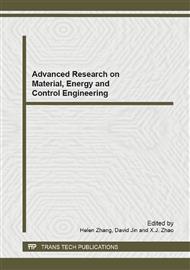p.104
p.108
p.112
p.116
p.120
p.125
p.131
p.135
p.139
Experimental Research on Flexural Mechanical Behavior of Fiber Reinforced Concrete Flexural Members
Abstract:
Based on the cross-section bending of 5 carbon fiber concrete beams, the mechanism of deflection and strain of carbon fiber concrete beam were studied considering the variation of the length of carbon fiber and stirrup ratio. The experimental results show that the deflection of destruction increased with the increase of the length of the carbon fiber, and the effect of stirrup ratio on deflection and strain of beams is not obvious. The carbon fiber can effectively improve the brittle failure of concrete beam, and the stain of concrete accorded with that steel bar at the same height. According to the existing test model, the theoretical calculating formula of CFRC was proposed and applied for the cracking load calculation expression of CRFC beams, and theoretical calculated results agree well with experimental results.
Info:
Periodical:
Pages:
120-124
Citation:
Online since:
January 2013
Authors:
Keywords:
Price:
Сopyright:
© 2013 Trans Tech Publications Ltd. All Rights Reserved
Share:
Citation:


